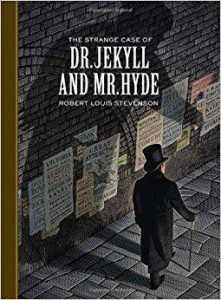Drifter’s Escape (1967) by Jochen Markhorst
 When Jack Fate, Dylan’s alter ego, starts “Drifter’s Escape” with his band, in the dusky film Masked And Anonymous (2003), the fair Pagan Lace (Penelope Cruz), seated between the Pope and Gandhi sighs: “I love his songs ’cause they’re not precise. They’re emotionally ambiguous. They invite different interpretations.”
When Jack Fate, Dylan’s alter ego, starts “Drifter’s Escape” with his band, in the dusky film Masked And Anonymous (2003), the fair Pagan Lace (Penelope Cruz), seated between the Pope and Gandhi sighs: “I love his songs ’cause they’re not precise. They’re emotionally ambiguous. They invite different interpretations.”
That does not stop Uncle Sweetheart (John Goodman) from explaining, completely clear and free of doubts, what this song is about. But first his interlocutor Bobby Cupid (Luke Wilson) may reveal what he thinks. “It’s about trying to get to heaven. You have to know the route before you start out,” Bobby firmly states, and gets haughtily dismissed by know-it-all Sweetheart:
“No, it’ s not about that at all. What strikes you about the song is the Jekyll-and-Hyde-quality. The song is written from Hyde’s point of view. That’s what you like. It’s about doing evil and trying to kill your conscience if you can. It’s not like those other songs of his, the ones about faithless women and booze, brothels, and the cruelty of society. It’s not like those. This one’s right up your alley. It’s about doing good by manipulating the forces of evil. It’s just like you.”
Goodman differs in details from the script and the superfluous punch line is even completely cut out (“Robert Louis Stevenson, it’s everything he was saying and more”). Moreover, he contradicts himself (first, it is about “doing evil”, four lines later it is suddenly about “doing good”). But the core idea remains intact, whether it is about “doing good by manipulating the forces of evil” or about “doing evil and killing your concience if you can”, according to Sweetheart it is in any case about the battle between Good and Evil. Food for Dylanologists, because Dylan has (partly) written the script, so the exegetes get a rare gift here: the master himself shares a vision on one of his songs. Entirely in style, fortunately – it does not get much clearer.
Sweetheart’s assertion that the song is written from Hyde’s perspective, does not seem to be maintainable. The second line of the song (I heard the drifter say) shows the narrative perspective: an otherwise nameless “I” reports. The I-person does not seem to have any guiding role or any influence on the action at all. In fact, no actor in “Drifter’s Escape” is eligible for a comparison with the pure, unscrupulous evil done by Mr. Hyde in Stevenson’s novella (The Strange Case of Dr. Jekyll and Mr. Hyde, 1886). No actor is personified as Mr Hyde.
If you really want to see a parallel, then at most Dr. Jekyll qualifies. The Drifter has no idea what he did wrong (“I still do not know what it was that I’ve done wrong“), just like Dr. Jekyll was not aware of the evil he had done while being Mr. Hyde. The other lines of text of the wanderer also suit Dr. Jekyll. The respected physician accuses himself of weakness (“in an hour of moral weakness, I once again compounded and swallowed the transforming draft“), knows that he does not have much time left and looks back with disgust at the trip he has made as Mr. Hyde.
 Additionally, the aphoristic point made by Sweetheart then is the wrong way around. Dr. Jekyll has to manipulate the forces of good in order to be able to do evil. Sweetheart confuses both main characters, or he thinks of one of the best-known oneliners of the German satirist Wilhelm Busch: “Das Gute, dieser Satz steht fest, ist stets das Böse was man läßt” (“What is good, this much is true, is the Evil we don’t do”).
Additionally, the aphoristic point made by Sweetheart then is the wrong way around. Dr. Jekyll has to manipulate the forces of good in order to be able to do evil. Sweetheart confuses both main characters, or he thinks of one of the best-known oneliners of the German satirist Wilhelm Busch: “Das Gute, dieser Satz steht fest, ist stets das Böse was man läßt” (“What is good, this much is true, is the Evil we don’t do”).
It seems therefore, at first, that Dylan, through Uncle Sweetheart, once again raises one of his beloved smokescreens in order to tease the analysts, and wants to give a – successful – suggestion of ethical depth to this half-forgotten miniature from 1967. But if we go along with it anyway, there is only one option left: the “I” from line two is a Mr. Hyde; he is the evil in oneself. The dormant “Mr. Hyde” currently has no control over the body in which he is residing, the body of the Drifter, and notes with distance, in the third person, what is happening to his host. In any case, that is consistent with the narrative style in Stevenson’s masterpiece; in it the unfortunate doctor and his evil alter ego also speak about each other in the third person.
Nevertheless, this song is not about the biblical question of what is Good and Evil, the lyrics do not trigger any reflection on ethics. A judge, a jury, a not understanding convict … the theme of this parable-like story is of course guilt, thus leading us to Kafka.
In his Er. Aufzeichnungen aus dem Jahre 1920 Kafka thinks back to an insight that he already had as a young adult in 1898. At that moment, Kafka already knows that he will become a writer, and even what his literary output will look like. Literature in which life knows its normal trial and error, but at the same time is seen “as a nothing, as a dream, as a hover”, as a realistically described  unreality, in other words. The adult Kafka succeeds. Not only in many of his short stories, but also in his three novels, of which Der Prozeß (‘The Trial’) is the best known. That novel is responsible for the many Kafka references in the interpretations of “Drifter’s Escape”. After all, in Der Prozeß a protagonist, Josef K., is arrested and convicted without being told what he is accused of or why he is guilty.
unreality, in other words. The adult Kafka succeeds. Not only in many of his short stories, but also in his three novels, of which Der Prozeß (‘The Trial’) is the best known. That novel is responsible for the many Kafka references in the interpretations of “Drifter’s Escape”. After all, in Der Prozeß a protagonist, Josef K., is arrested and convicted without being told what he is accused of or why he is guilty.
However, this is not the Kafka connection. It is really in the Kafkaesque tone that Dylan manages to strike, that unreal, dream-like atmosphere, which we recognize not only from Kafka’s work, but also from other songs on John Wesley Harding and from Alice In Wonderland. The approach is: the reader and the main character share the same pattern of expectations, follow the same logic and share similar norms – and that whole package clashes with a different culture, a culture that is shared by all the other characters in the story.
Alice remains, with the reader, amazed at the actions, the answers and the logic of the inhabitants of Wonderland, just as Josef K.’s lack of understanding is completely transparent to our eyes, but in the meantime he is all alone in a complex of norms, logic and inference that is obvious to everyone but him. The trial against the Drifter and the ending are, for us in any case, as chaotic and confusing as the court scene in Alice In Wonderland, in the final chapter. Shouting, tumult and disrespectful behavior plus a closing deus ex machina; Alice escapes by waking up, in “Drifter’s Escape” the lightning strikes.
The advocates of autobiographical interpretation do not care for Kafka, Stevenson or Alice in Wonderland. To them, it is evident: the Drifter is the exhausted, unhinged Dylan of 1966, the jury represents his demanding environment of fans, managers and record company and the lightning strike is the motorcycle accident that frees him, giving him the chance to escape from that madhouse. It fits pretty well.
On John Wesley Harding, the song is, like the rest of the album, a sparsely orchestrated miniature. Its beauty seems to escape Dylan. It takes no less than twenty-five years before he puts it on his setlist, and then only because of a recent event: the whole country is turned upside down because of the lawsuit against the officers who have abused Rodney King. The riots of April 29, 1992 in Los Angeles inspire the master to pull that song with the verses The trial was bad enough / But this is ten times worse out of the drawer.
The live versions are successful, and Dylan gets hooked. Until 2005 he plays “Drifter’s Escape” 257 times. Wonderful, but on stage, in the electric version, the intimacy of that studio recording from 1967 evaporates.
This also applies to most covers. Only a few artists keep it small and acoustic, but most of the interpreters, just like Dylan himself in Masked and Anonymous, turn it into a rocker, with a variety of ferocious guitars and thunder of drums.
The funky accent of Jimi Hendrix is quite attractive, the country undercurrent in Patti Smith’s cover is beautiful too, but the most breathtaking cover is the driving, pulsating – quite different from Dylan’s original, actually – interpretation by Thea Gilmore. Steaming and exciting, on the exquisite tribute album John Wesley Harding.
Returning to the mystical quality and equally gorgeous is the one from veteran boogie-bluesman George Thorogood. The Delawarean cheats a little by secretly adding an extra chord (in the short, instrumental intermezzi between the verses), but that does not spoil the fun; George Thorogood and The Destroyers on The Hard Stuff, 2006. Amusing is the reference in the opening bars: we hear, pretty clear, Thorogood asking “Is it rolling, Jim?”
You might also enjoy…
- The Drifter’s Escape: the meanings and the re-interpretation
- Deadwood and Deadman: Bob Dylan and post-modernism
- The real politics of Bob Dylan
What else is on the site
You’ll find an index to our latest posts arranged by themes and subjects on the home page. You can also see details of our main sections on this site at the top of this page under the picture.
The index to the 500+ Dylan compositions reviewed is now on a new page of its own. You will find it here. It contains reviews of every Dylan composition that we can find a recording of – if you know of anything we have missed please do write in.
We also have a discussion group “Untold Dylan” on Facebook. Just type the phrase “Untold Dylan” in, on your Facebook page or follow this link
And please do note The Bob Dylan Project, which lists every Dylan song in alphabetical order, and has links to licensed recordings and performances by Dylan and by other artists, is starting to link back to our reviews.

We are actively promoting a link to this interesting topic on The Bob Dylan Project at:
https://thebobdylanproject.com/Song/id/171/Drifter's-Escape
If you are interested, we are a portal to all the great information related to this topic.
Join us inside Bob Dylan Music Box.